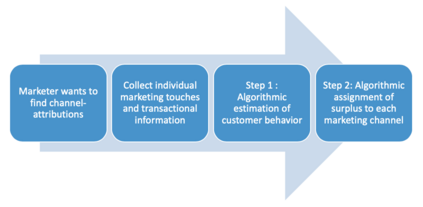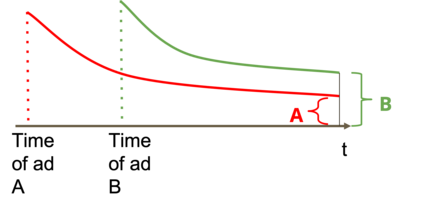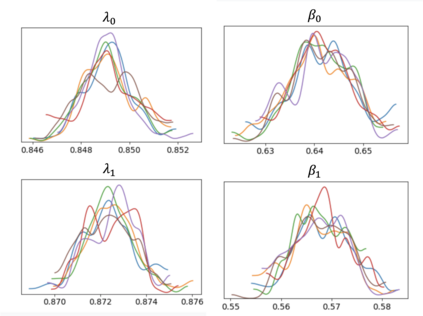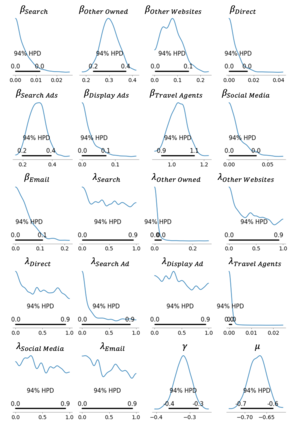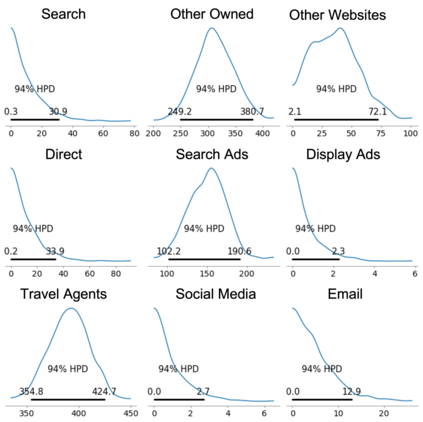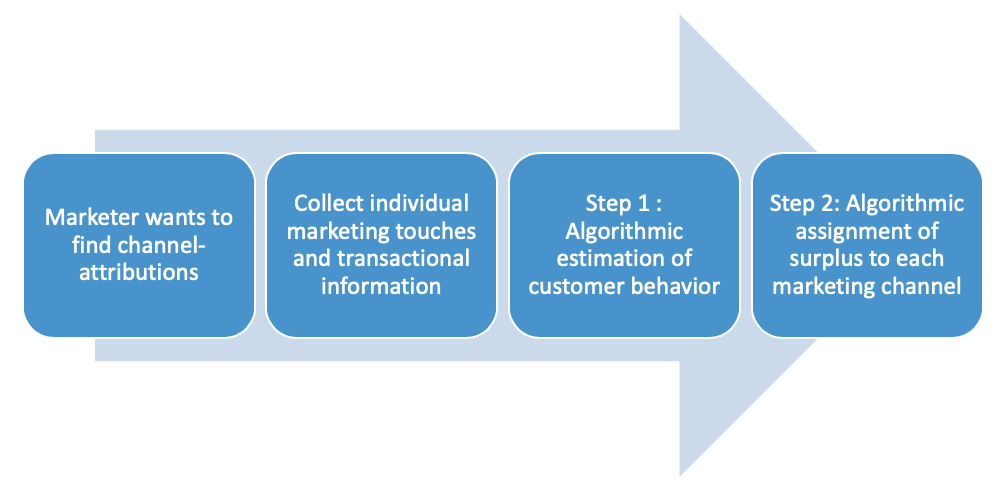In a multi-channel marketing world, the purchase decision journey encounters many interactions (e.g., email, mobile notifications, display advertising, social media, and so on). These impressions have direct (main effects), as well as interactive influence on the final decision of the customer. To maximize conversions, a marketer needs to understand how each of these marketing efforts individually and collectively affect the customer's final decision. This insight will help her optimize the advertising budget over interacting marketing channels. This problem of interpreting the influence of various marketing channels to the customer's decision process is called marketing attribution. We propose a Bayesian model of marketing attribution that captures established modes of action of advertisements, including the direct effect of the ad, decay of the ad effect, interaction between ads, and customer heterogeneity. Our model allows us to incorporate information from customer's features and provides usable error bounds for parameters of interest, like the ad effect or the half-life of an ad. We apply our model on a real-world dataset and evaluate its performance against alternatives in simulations.
翻译:在一个多渠道的营销世界中,购买决定过程会遇到许多互动(例如电子邮件、移动通知、显示广告、社交媒体等),这些印象具有直接(主要效果)和对客户最后决定的交互影响。为了最大限度地实现转换,市场者需要了解这些营销努力中的每一项如何单独和集体地影响客户的最后决定。这种了解将有助于她优化广告预算,而不是互动营销渠道。解释各种营销渠道对客户决定过程的影响的问题被称为营销归属。我们建议一种巴伊西亚营销归属模式,以捕捉既定的广告行动模式,包括广告效果的衰落、广告与客户的相互作用的直接效果。我们的模型使我们能够纳入客户特征的信息,并为兴趣参数提供可用的错误界限,如广告的广告效应或半衰期。我们在真实世界数据集上应用我们的模型,并对照模拟中的替代方法评估其业绩。

